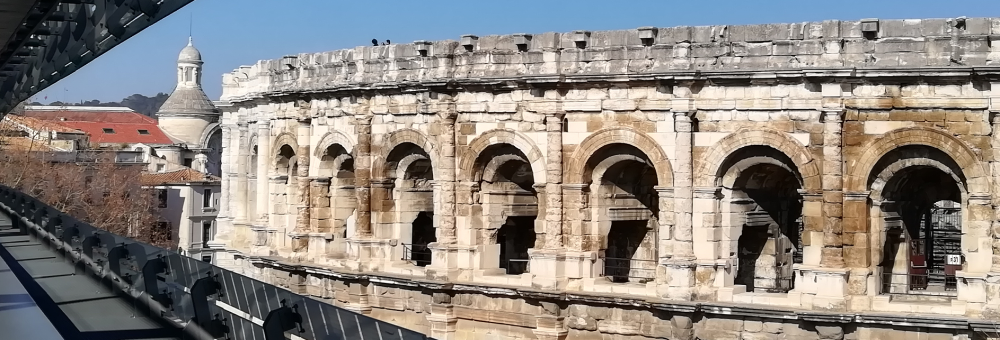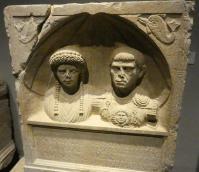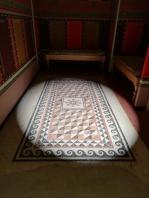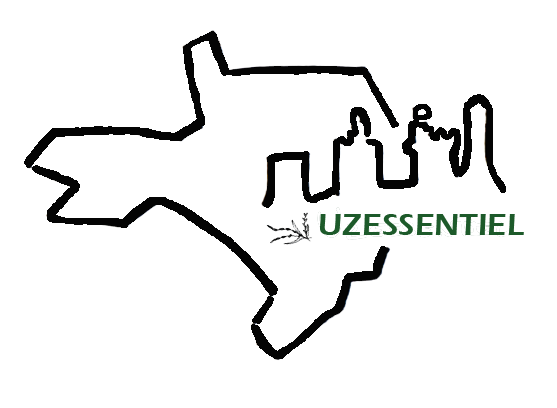The Musée de la romanité, in Nîmes
A must-see address since its inauguration in June 2018, the Museum of the romanity stands out for its modernity as soon as its visitors arrive near the arena of Nîmes.

The building, which its contemporary lines, starting with a metal structure on the façade covered with "7,000 sheets of screen-printed glass covering a surface area of 2,500 m2", was created by the Franco-Brazilian urban architect Elizabeth de Portzamparc.
|
The archaeological museum inaugurated in 1926 took over the very first museum, created in 1823, in the Maison carrée) |

Taking over the first archaeological museum inaugurated in 1926 on boulevard Amiral Courbet which closed its doors in 2018, having become too small to accommodate all the collections, the Museum of romanity is today perfectly suited to the presentation of the mosaics known as Achilles and Pentheus, discovered between 2006 and 2007 during street work on the Jean-Jaurès alleys.
Today, some 5,000 works and archaeological pieces, "out of the 25,000 owned by the museum", can be discovered in a place of more than 9,000 m2, not counting the elements of the temporary exhibitions.

In addition, its archaeological garden offers a Mediterranean green setting, a real "plant museum" of 3,500 m2, structured in 3 strata (Gallic, Roman and medieval), just like the green roof terrace, "thought of as a 5th façade, open to the sky".
Videos complete the museography and "multimedia devices (65 in all) along the route for virtual visits allow visitors to enter a Gallic house from around 400 BC and a rich Roman residence. C. and a rich Roman residence, graphic animations (cartoons and motion design) to observe the gestures and techniques of Roman craftsmen in fields such as mosaics, frescoes, ceramics and bronze work, and maps that show the positioning of cities, battle sites or the extension of Roman influence.
The Musée de la Romanité, 25 centuries of history

A space and time to travel between "the Gallic period before Roman times, the Roman period and then the Middle Ages, Antiquity"... We find the pre-Roman period, from the 8th century BC to the 1st century BC, from the Roman period to the Middle Ages.
We find the pre-Roman period, from the 8th century BC to the 1st century BC, from the Arecomic Volcanoes to the Gauls, the growing influence of Romanity, the Roman period, from the 1st century BC to the 3rd century AD, the evolution of urbanism to the construction of great monuments such as the Arena or the Pont du Gard, to see the reconstruction of the Villa Roma domus and the collection of mosaics, including the mosaic of Pentheus, "rediscovered during archaelogical digging in Nimes in 2007" and the mosaic of Bellerophon.
Also noteworthy is the vast collection of inscriptions, including funerary ones, and the emphasis on Roman deities, such as Jupiter, Apollo and Venus, and Oriental ones such as Isis and Serapis, not forgetting Gallic ones such as Nemausus and Sucellus. Then comes the medieval period, from the 10th century to the 15th century: The Romanesque period, from the 10th to the beginning of the 12th century, can be seen here through capitals and cornices, and the Gothic period (from the 13th to the 15th century).
The right address: Musée de la romanité, 16 boulevard des arènes, in Nîmes. Open every day from 10 am to 7 pm.





